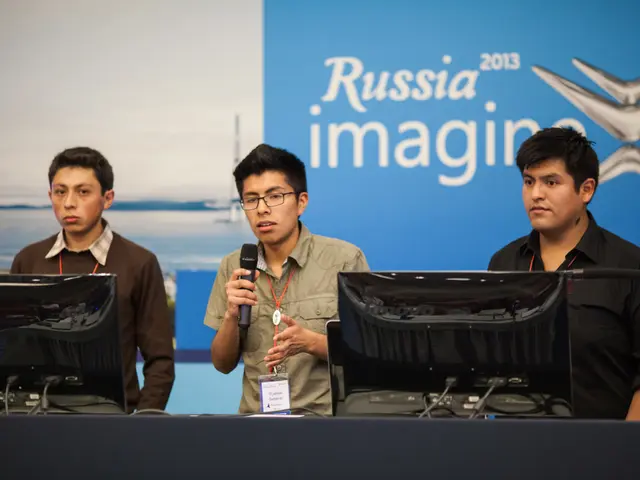Remarkable Reality: Modern Smartphones Retain WWII Era Technology
In the annals of technological advancement, few periods can claim as significant an impact as World War II. The conflict that engulfed the globe from 1939 to 1945 left an indelible mark on the development of modern smartphones, shaping key fields such as radar, encryption, computing, and radio communications.
The roots of mobile communication technology can be traced back to this period, with the development of handheld radio devices like Motorola’s Handie-Talkie and FM Walkie-Talkie. These military innovations improved portable wireless telephony technology, paving the way for the cellular networks that are integral to smartphones today.
The cracking of the German Enigma code during World War II by British mathematicians, including Alan Turing, accelerated early computational development. The wartime push produced early programmable machines (e.g., Colossus, Bombe), which laid the groundwork for modern digital cryptography and computing in smartphones, enabling secure communication and data encryption.
Radar advancements during the war also played a crucial role. Improvements in high-frequency radio wave technology and signal processing have influenced wireless transmission protocols, antennas, and positioning systems like GPS that smartphones rely on. In fact, radar technology is similar to GPS in that it sends out a signal and uses timing to determine location.
The development of radar during World War II also allowed Allied forces to detect enemy planes and ships using radio waves before they could be seen. This need for fast and wireless communication during the war led to the invention of two-way radios.
The war effort also kickstarted a computing revolution, leading to the birth of electronic computers. The ENIAC, completed in 1945, was the first big digital computer and could perform thousands of calculations per second. Its design is based on the Von Neumann architecture, which is still used in modern smartphones.
Transistors, invented in 1947 by Bell Labs, made it possible to shrink computers from room-sized monsters to pocket-sized powerhouses. This invention led to the development of microchips and processors, which are the tiny, brain-like parts inside your phone that let it run apps, take photos, and stream TikToks all at once.
Modern phones now use chips with billions of transistors, and this wild level of miniaturization started with post-WWII innovation. Furthermore, the invention of the transistor paved the way for the development of inertial navigation tools, such as MEMS sensors, used for functions like auto-rotating screens, counting steps, and aiming in mobile games.
In conclusion, World War II technologies not only enhanced communication hardware (radios) and cryptography but also accelerated the birth of digital computing and wireless technologies that are central to the capabilities of modern smartphones. The layered civilian and military digital infrastructures shaped during and after World War II formed the technological backbone enabling the hyperconnected smartphone world today.
Science and technology both benefited significantly from advancements made during World War II. Radar advancements paved the way for wireless transmission protocols, antennas, and positioning systems like GPS found in modern smartphones, while improvements in computing technologies resulted in the first digital computer, ENIAC, and the invention of the transistor, which shrank computers to pocket-sized powerhouses and paved the way for the development of inertial navigation tools, such as MEMS sensors, found in smartphones.




